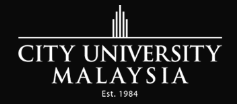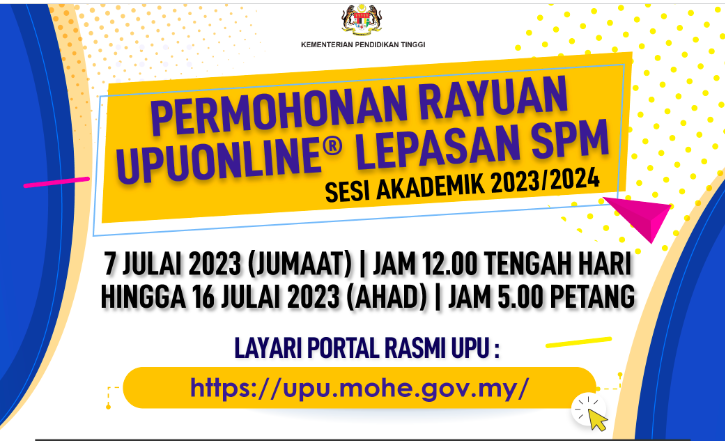Developing Future Talent: Twelfth Malaysia Plan 2021-2025
by StudyMalaysia on October 12, 2021 | Top Stories

Towards A Prosperous, Inclusive, Sustainable Malaysia
"The success in implementation and achievement of the Twelfth Malaysia Plan’s objectives and goals is highly dependent on the commitment of each and everyone of us, especially our youth, based on the spirit of Keluarga Malaysia"
-YAB Dato’ Sri Ismail Bin Yaakob
As the world advances into the era of the 4IR (4th Industrial Revolution) and emerging technologies, it is imperative for our education system to keep up with these changes so as to nurture individuals who can meet the demands of the modern world. Infrastructure, curricula, quality of academic staff right from preschool to institutions of higher learning should be streamlined to give continuity and meet new demands. Besides the present COVID-19 pandemic putting a lot of people out of job, many graduates are unemployed due to the mismatch between education and labour market needs.
Under the 12th Malaysia Plan, the National Education System will be further improved. The teaching of Science, Technology, Engineering and Mathematics (STEM) will be reinforced. Infrastructures of schools and institutions will be upgraded. TVET (Technical and Vocational Education and training) will be revamped and a flexible higher education system will be created.
The overall aims of the plan are to address current issues, to restart and rejuvenate socioeconomic development for long-term sustainability and prosperity and to enhance the nation’s competitiveness to be a more resilient and sustainable player on the world stage.
Many of the strategies drawn up in the 12th Malaysia Plan are in response to the challenging situation brought about by the COVID-19 pandemic. The COVID-19 pandemic has caused a spike in unemployment and affected the way people work and businesses operate. These changes in the society necessitate the realignment of the labour market as well as the education and training landscape.
Human capital is a key driver of economic growth and socioeconomic development. Thus measures must be taken to develop a capable, skilled, flexible and relevant workforce. The focus now for the education sector is to
- improve the quality of education
- transform technical and vocational education and training (TVET)
- strengthen lifelong learning (LLL)
- increase the efficiency of training people to meet industry demands
Efforts must be made to improve the quality of universities and labour productivity. There is no doubt that high quality education produces a high-calibre talent pool with high industrial skills and people who are highly adaptable. Thus, our education system needs to be revamped from time to time to meet the changing skills required by industries and to embrace new technologies that are evolving.
The 12th Malaysia Plan sets out to address the shortcomings of the previous plan and what it failed to achieve. Some of the areas are as follow:
- Scores for Programme for International Assessment (PISA) and Trends in International Mathematics and Science Study (TIMSS) were below the international average.
- Only one university was ranked in the top 100 under the Quacquarelli Symonds World University Rankings (QSWUR).
- Enrolments for preschool and secondary levels were below the universal enrolment of more than 95%.
- Intake of SPM leavers into TVET programmes was lower than the target of 225,000 students (due to public perception of TVET as a second choice and the fragmented TVET landscape).
Two Priority Areas have been identified and drawn up towards the developing of future-ready talent.
- Priority Area A – Realigning the Labour Market for Inclusive and Sustainable Growth
- Promoting Equitable Compensation of Employees and Labour Participation (Strategy A1)
- Strengthening the Labour Market Support System (Strategy A2)
- Priority Area B – Developing Future-Ready Talent
- Raising the Quality of Education (Strategy B1)
- Strengthening Governance (Strategy B2)
- Leveraging Emerging Technologies (Strategy B3)
- Ensuring Equitable Learning Outcomes (Strategy B4)
- Addressing Overlap in TVET Governance (Strategy B5)
Priority A - Realigning the Labour Market for Inclusive and Sustainable Growth
Strategy A1 (Promoting Equitable Compensation of Employees and Labour Participation)
- Promoting equitable employee compensation, providing equal access to employment opportunities, improving standard of living of workers, reducing dependency on foreign workers, encouraging the participation of more females in the workforce.
- Reconciling different methods of wage calculation, giving guidelines to companies to reorganise their work systems to improve employee compensation.
- Making efforts to increase membership in trade union to give stronger bargaining power in wage negotiations.
- Reducing dependency on foreign workers and encouraging greater local participation.
Strategy A2 (Strengthening the Labour Market Support System)
- Enhancing labour market information infrastructure and promoting responsive workforce training.
- Understanding the dynamics of the labour market so as to address labour market challenges and to reduce skills mismatch.
- Formulating academic programmes to train workers to meet new demands from industry.
- Addressing the underemployment of graduates by bridging programmes to enhance their employability.
- Providing courses on creative & analytical thinking, organisational adaptability, communication & networking skills.
- Nurturing entrepreneurship.
- Enhancing the employment services portal so as to redistribute workers displaced by the COVID-19 pandemic.
- Providing funds for upskilling and reskilling.
- Training workers to work with new automation technologies.
- Ensuring gig workers work in a safe and conducive environment.
Priority B - Developing Future-Ready Talent
Strategy B1 (Raising the Quality of Education)
- Improving Learning Outcomes:
- Widening access to education, enhancing teaching & learning and improving the school environment.
- Carrying out awareness programmes to increase preschool enrolment.
- Upgrading the quality of ECCE (Early Childhood Care & Education) teachers. All public and private ECCE teachers must have at least a diploma qualification by 2025. The Diploma in ECCE offered by IPG will be extended to these teachers.
- Extending compulsory education from 6 to 11 years thus making secondary education compulsory for all Malaysian citizens.
- Strengthening STEM (Science, Technology, Engineering, Mathematics) education to prepare students for 4IR (the 4th Industrial Revolution).
- Rolling out two teacher training programmes – Inquiry-Based Science Education (IBSE) and Inquiry-Based Mathematics Education (IBME).
- Introducing advanced STEM curriculum that embraces digital technologies.
- Abolishing UPSR in 2021 and PT3 in 2020 and replacing them with School-Based Assessments (PBS).
- Conducting continuous professional development for school teachers and lecturers at IPG.
- Requiring all English Language teachers to attain at least C1 level in the CEFR (Common European Framework of Reference for Languages), all English lecturers at IPG to have a C2 level in CEFR.
- Aligning the evaluation of English proficiency from primary to secondary levels to the CEFR starting 2021 and 2022, respectively.
- Promoting a Flexible Higher Education System:
- Opening up more diverse education and training pathways.
- Making enrolment across universities more flexible where students can pursue subjects at any HEIs during the course of their study.
- Enhancing entrepreneurship education in HEIs.
- Ensuring optimal industrial exposure for students.
- Enriching the knowledge of academic staff by allowing cross-sector academic mobility.
- Improving the competency of academic staff in emerging technologies.
- Improving the reputation and branding of HEIs to attract more students.
- Strengthening Assessment Approach:
- Emphasising new assessment elements such as emotional quotient, soft skills, personal attributes, problem-solving skills besides academic achievement.
- Strengthening Industry Collaboration:
- Encouraging collaboration between HEIs and industries to get funding and investment.
- Focusing on R&D to meet industry demands using emerging technologies such as psychotechnology, robotics and AI.
- Enhancing TVET Programmes:
- Equipping students with enhanced technical skills to align to the needs of industries.
- Exposing students to more industry equipment in campuses.
- Exposing students to the latest technology and enabling them to gain industrial experience.
- Enculturation of Lifelong Learning (LLL):
- Implementing LLL programmes to develop a learned society
Strategy B2 (Strengthening Governance)
- Governance and Coordination of School System
- Improving the quality and management of preschool education - the curriculum standard, student outcomes, teaching & learning materials, infrastructure and quality of teachers of all preschools will be reviewed.
- Strengthening of Parent-Teacher Associations (PTAs) to facilitate sourcing of external funding, provision of additional manpower and expertise to improve the quality of schools.
- Fostering Effective Governance and Greater Financial Independence of Higher Education Institutions (HEIs)
- Ensuring programmes offered are up-to-date, industry relevant in line with international best practices and accredited by international organisations.
- Reviewing fees and prioritising R&D activities.
- Encouraging HEIs to expand alternative financial pathways by managing funds from waqf, endowment, donations and crowdfunding
- HEIs are to source contributions from industries, multi-national companies, financial institutions and the community.
- The PTPTN will fund courses that have high employability to ensure higher loan repayment.
Strategy B3 (Leveraging Emerging Technologies)
- Optimising the Digital Learning Ecosystem – the Digital Education Strategy will be introduced.
- Expanding teaching, learning and assessment using digital technology.
- Enhancing the digital platform for teachers to share educational content and resources.
- Integrating computational thinking and computer science skills into the curriculum.
- Training teachers to embrace remote/online teaching & learning.
- Making the learning of the Design and Technology (RBT) subject more effective by equipping workshops with portable computers and robotics components.
- Improving Internet connectivity, upgrading local area network and providing digital equipment for schools and students.
- Strengthening remote learning approaches by HEIs to ensure continuity in learning & teaching in the event of any disruptions like the present COVID-19 pandemic.
- Creating a smart campus environment that includes smart classrooms, labs, interactive learning and teaching using augmented reality (AR) and virtual reality (VR) technologies.
- Strengthening TVET through Digital Learning
- Emerging technologies such VR, AR and AI will be leveraged to complement hands-on teaching activities, research and development conducted in laboratories and workshops.
- Pedagogies that embed these technologies will be incorporated in the curriculum.
- Collaboration between TVET institutions and industry will be intensified.
Strategy B4 (Ensuring Equitable Learning Outcomes)
- Increasing Accessibility to Inclusive and Quality Education:
- Making education accessible to SEN (children with Special Educational Needs) and ensuring them placements in either public schools or SEN-ready public schools.
- Implementing the Special Education Curriculum and TVET Programmes for different categories and levels of disability.
- Providing screening, intervention, rehabilitation and consultation services to children with special educational needs and their parents.
- Introducing a special programme called ‘Bringing School to the Community’ to increase Orang Asli students in formal learning.
- Focusing on 3M skills (reading, writing and counting) to prepare students (SEN) for mainstream school environment.
- Transforming K9 schools into Comprehensive Special Model School 11 (K11) to ensure students complete 11 years of education.
Strategy B5 (Addressing Overlap in TVET Governance)
- Revamping the TVET Governance Systems:
- Establishing a TVET council to optimise utilisation of resources and minimising duplication of programmes.
- Promoting TVET as a preferred choice by leveraging successful TVET graduates in career, education and business.
- Promoting the TVET Brand:
- Engaging both public and private TVET providers to promote TVET as a mainstream choice.
- Enhancing Quality Programmes:
- Obtaining accreditation, recognition and certification from related professional and industry lead bodies both locally and internationally
- Expanding upskilling and reskilling programmes to include micro-credentials, industrial attachments, training and cross-fertilisation.
- Enabling TVET graduates to acquire professional status by MBOT (Malaysia Board of Technologists), enabling them to pursue professional career pathways.
- Creating TVET Database:
- A TVET database will be created to coordinate and integrate data pertaining to TVET pathways, jobs and job matching.
Thus, under the 12th Malaysia Plan we see concerted efforts drawn up to develop future talent by realigning the labour market and improving the quality of education and training programmes. This is to prepare a pool of Malaysian talent to meet future demands.
You May Also Be Interested In...
Go Sky-High with a Career in Transport Services
![Go Sky-High with a Career in Transport Services - StudyMalaysia.com]() Many people don't realise how many opportunities there are in the...
Many people don't realise how many opportunities there are in the...Five quick ways to improve your memory
![Five quick ways to improve your memory - StudyMalaysia.com]() So exam season is just around the corner and one of the things you’r...
So exam season is just around the corner and one of the things you’r...UPUOnline – Results of application of SPM school leavers for admission to Institutes of Higher Learning & Institusi Latihan Kemahiran Awam (ILKA) for academic session 2023/2024
![UPUOnline – Results of application of SPM school leavers for admission to Institutes of Higher Learning & Institusi Latihan Kemahiran Awam (ILKA) for academic session 2023/2024 - StudyMalaysia.com]() Offers of acceptance into Public Universities (UA), Polytechnics, Comm...
Offers of acceptance into Public Universities (UA), Polytechnics, Comm...What is plagiarism and what you need to know
![What is plagiarism and what you need to know - StudyMalaysia.com]() Are you working on your term assignment? Or writing an essay? Or perha...
Are you working on your term assignment? Or writing an essay? Or perha...15 hot courses that didn’t exist in the 1990s
![15 hot courses that didn’t exist in the 1990s - StudyMalaysia.com]() These courses definitely didn't exist in your grandparents' ...
These courses definitely didn't exist in your grandparents' ...Mouth Cancer: Why Early Detection Makes all the Difference
![Mouth Cancer: Why Early Detection Makes all the Difference - StudyMalaysia.com]() Ulcers, sore throat, a painful tongue and difficulty chewing – are t...
Ulcers, sore throat, a painful tongue and difficulty chewing – are t...





























